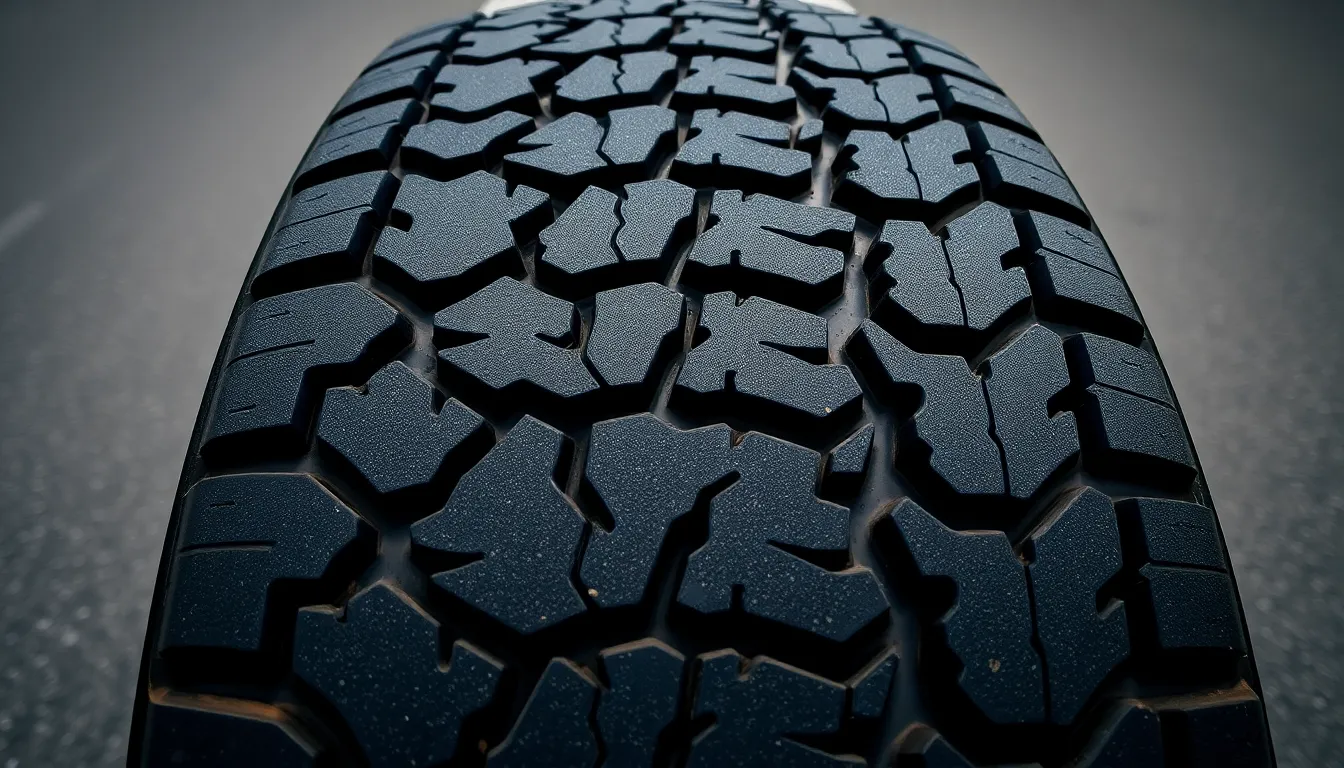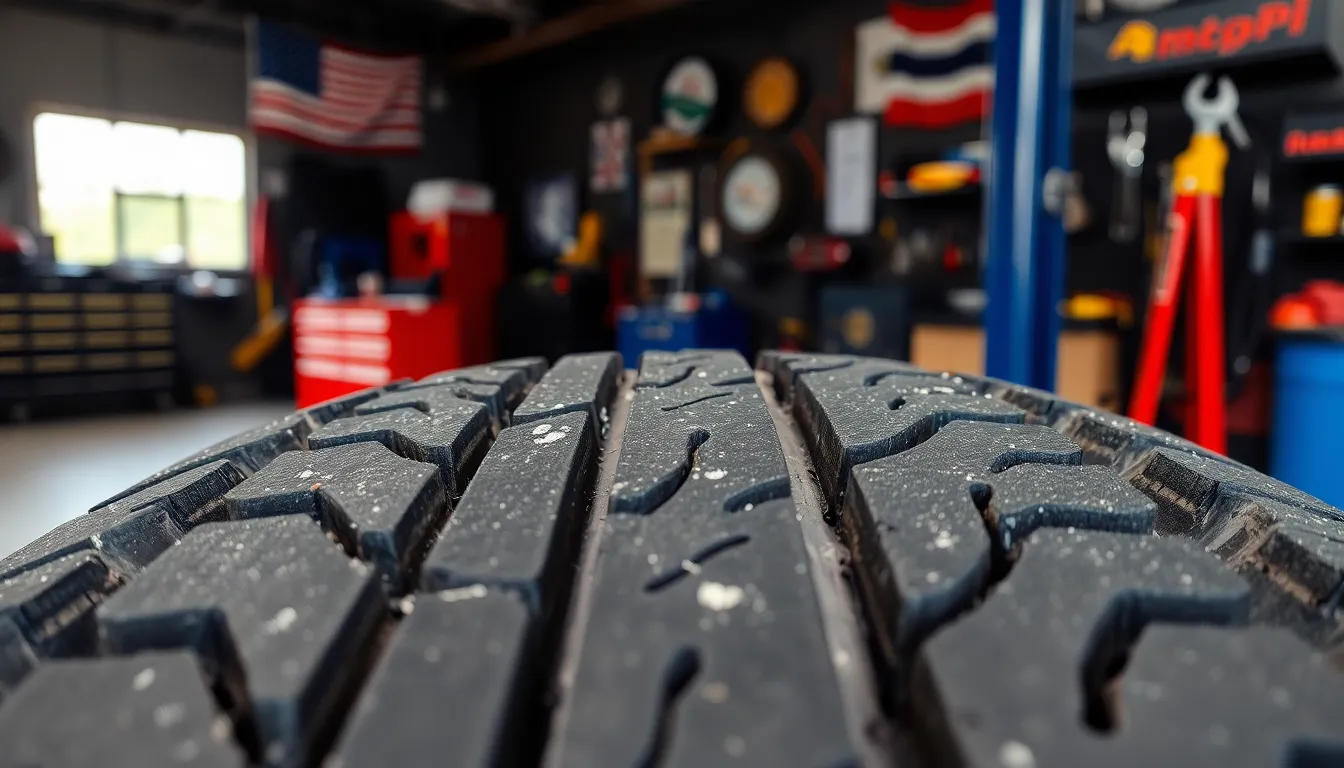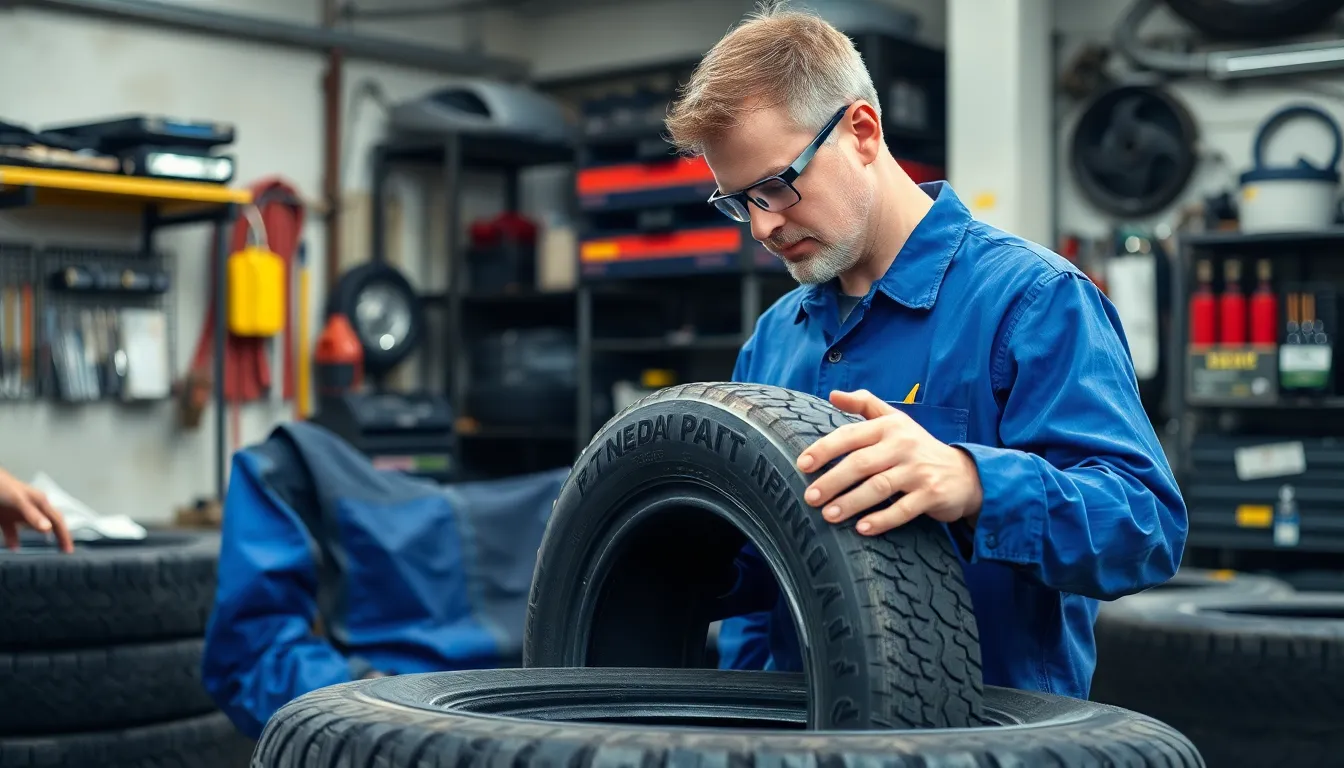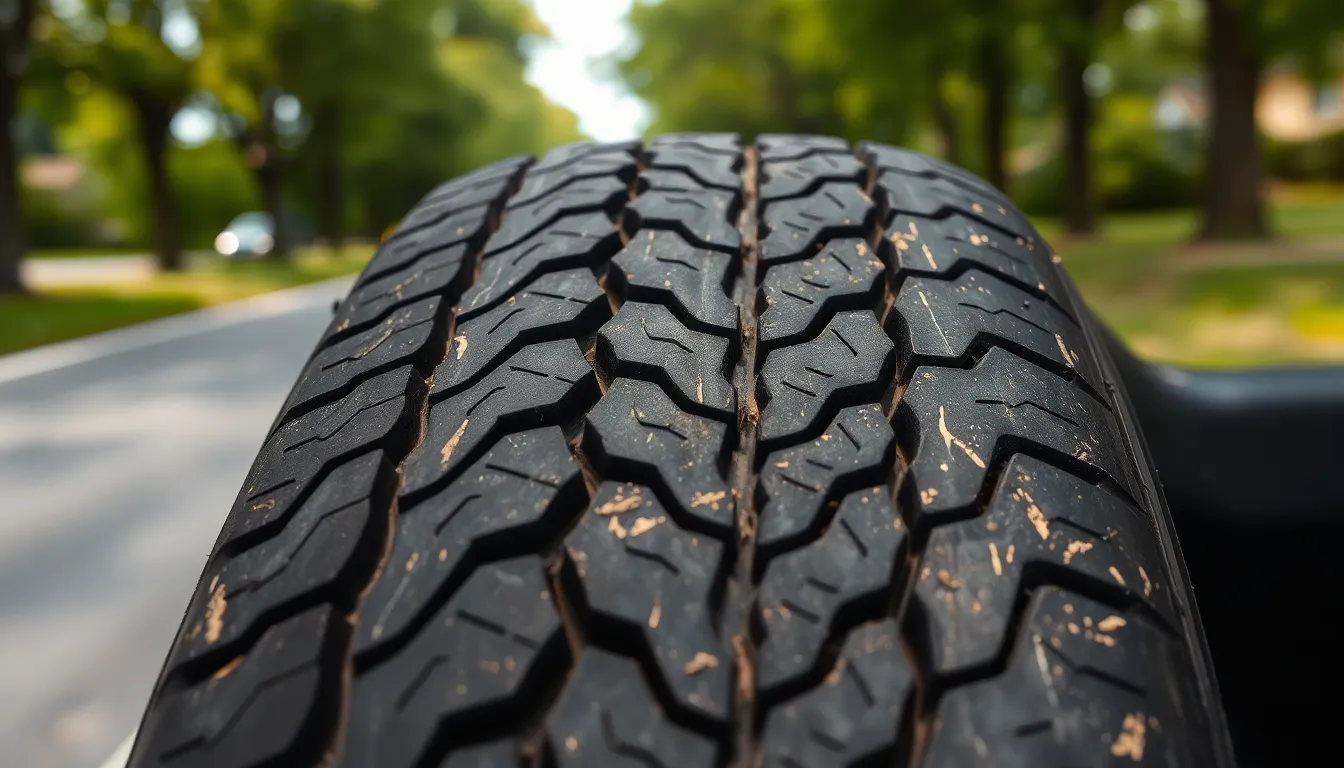We’ve all experienced that unsettling moment when our car starts making strange noises or vibrating unexpectedly while driving. If you’re hearing a rhythmic thumping sound or feeling unusual vibrations through your steering wheel, tire cupping might be the culprit behind your automotive woes.
Tire cupping creates distinctive scalloped wear patterns that look like someone took small scoops out of your tire’s surface. This irregular wear doesn’t just affect your driving comfort – it’s a warning sign that something’s seriously wrong with your vehicle’s suspension system, alignment, or tire maintenance routine.
Understanding what causes tire cupping can save you hundreds of dollars in premature tire replacements and potentially dangerous driving situations. We’ll explore the primary factors that lead to this frustrating problem and help you identify whether your tires are showing early warning signs of cupping damage.
What Causes Cupping of Tires
Suspension system problems stand as the primary culprit behind tire cupping patterns. Worn shock absorbers and struts fail to control tire bounce during driving, creating uneven contact patches that wear into distinctive scalloped patterns. Bad ball joints allow excessive wheel movement, causing irregular tire contact with the road surface. Damaged control arm bushings permit unwanted wheel motion that disrupts consistent tire wear patterns.
Wheel alignment issues contribute significantly to cupping development across tire treads. Incorrect toe angles force tires to scrub sideways while rolling forward, generating heat and irregular wear. Improper camber settings tilt wheels inward or outward, concentrating pressure on exact tread areas. Caster problems affect steering stability and create uneven tire contact during turns and straight-line driving.
Tire maintenance neglect accelerates cupping formation through several mechanisms. Underinflated tires flex excessively, generating heat buildup and uneven wear patterns across the tread surface. Overinflated tires reduce contact patch size, concentrating wear in narrow strips. Irregular tire rotation schedules prevent even wear distribution, allowing cupping patterns to establish and worsen over time.
Wheel and tire imbalances create vibrations that manifest as cupping wear patterns. Heavy spots on wheels or tires cause bouncing motions at highway speeds, creating rhythmic tire contact variations. Bent wheels from pothole impacts generate wobbling motions that produce irregular wear. Tire defects like belt separation or sidewall bulges create ever-changing imbalances during rotation.
| Cupping Cause Category | Exact Issues | Wear Pattern Characteristics |
|---|---|---|
| Suspension Problems | Worn shocks, bad ball joints, damaged bushings | Deep scalloped indentations every 3-4 inches |
| Alignment Issues | Incorrect toe, improper camber, caster problems | Diagonal wear patterns, edge feathering |
| Tire Maintenance | Wrong pressure, irregular rotation | Uneven depth variations, accelerated wear |
| Wheel Imbalance | Heavy spots, bent wheels, tire defects | Rhythmic cupping at regular intervals |
Driving habits influence cupping development through aggressive acceleration and braking patterns. Hard cornering places excessive lateral forces on tire edges, promoting uneven wear. Frequent high-speed driving on rough roads amplifies suspension stress and tire bouncing. Emergency braking creates flat spots that develop into cupping patterns over time.
Signs and Symptoms of Tire Cupping

Recognizing tire cupping early prevents extensive damage and costly replacements. We can identify cupping through exact visual patterns and distinctive driving sensations that indicate uneven tire wear.
Visual Indicators of Cupped Tires
Cupped tires display characteristic scalloped depressions across the tread surface. These indentations appear as rounded hollows or cups that alternate with raised sections of rubber creating a wave-like pattern around the tire circumference.
Primary visual signs include:
- Diagonal wear patterns spanning 3 to 4 inches across the tread
- Smooth depressions resembling shallow bowls in the rubber
- Uneven tread depth measurements when checked with a penny test
- Feathered edges where tread blocks meet the cupped areas
- Asymmetrical wear patterns between left and right tires
The cupping pattern typically develops on the outer edges of front tires first. Rear tires show cupping across the center tread blocks when suspension components fail. We observe that cupping progresses from minor surface irregularities to deep gouges measuring 1/32 to 3/32 inch in depth.
How Tire Cupping Feels While Driving
Cupped tires create distinct vibrations and noises that worsen with vehicle speed. Drivers experience rhythmic thumping sounds that match tire rotation frequency particularly noticeable at speeds between 30 and 50 mph.
Driving symptoms of tire cupping:
- Steering wheel vibration that intensifies during acceleration
- Humming or roaring noise from the road surface contact
- Vehicle pulling to one side during straight line driving
- Bouncing sensation transmitted through the seat and floorboard
- Increased road noise that correlates with tire rotation speed
The vibration frequency matches the cupped tire’s rotation creating a consistent drumming pattern. We notice that cupping symptoms become more pronounced when driving on smooth highway surfaces compared to textured roads. Braking performance deteriorates as cupped areas reduce tire contact patch consistency affecting stopping distances by 10 to 15 percent.
Primary Causes of Tire Cupping

Tire cupping develops from several interconnected mechanical issues that disrupt normal tire contact with the road surface. Understanding these root causes helps us identify problems before extensive damage occurs.
Suspension System Problems
Faulty suspension components create uneven tire contact patterns that lead directly to cupping formation. Worn ball joints allow excessive wheel movement during driving, causing tires to bounce and skip across pavement surfaces. Damaged control arm bushings lose their ability to maintain proper wheel positioning, resulting in irregular tire wear patterns that appear as scalloped depressions.
Control arm bushings deteriorate over time, particularly in vehicles with high mileage or frequent driving on rough terrain. Defective tie rod ends contribute to cupping by allowing wheels to move independently of steering input, creating inconsistent road contact. Broken or weakened suspension springs fail to maintain consistent downward pressure on tires, leading to periodic loss of traction that manifests as cupping patterns.
Wheel Alignment Issues
Incorrect wheel alignment settings directly cause tire cupping by forcing tires to contact the road at improper angles. Toe misalignment creates the most noticeable cupping patterns, as tires scrub sideways while rolling forward. Improper toe settings force tires to fight against their natural rolling direction, generating heat and uneven wear that develops into distinctive scalloped patterns.
Camber misalignment affects tire cupping by tilting wheels inward or outward from vertical position. Excessive positive camber concentrates weight on the outer tire edges, while negative camber overloads inner tire surfaces. Caster angle problems compromise steering stability and create irregular tire contact pressure that accelerates cupping development across the tread surface.
Tire Imbalance
Unbalanced tires create vibrations that lead to cupping through inconsistent road contact pressure. Weight distribution irregularities cause tires to bounce at exact speeds, creating rhythmic contact patterns that wear into the tread surface. Ever-changing imbalance occurs when tire weight isn’t evenly distributed around the wheel circumference, causing vertical bouncing motions that develop into cupping.
Static imbalance results from uneven weight distribution across the tire’s centerline, creating side to side wobbling that contributes to irregular wear. Wheel weights that fall off or become displaced create sudden imbalance conditions that rapidly accelerate cupping formation. Bent wheels compound imbalance issues by creating additional vibration points that worsen existing cupping patterns.
Worn Shock Absorbers and Struts
Deteriorated shock absorbers fail to control tire bouncing, allowing wheels to lose contact with road surfaces repeatedly. Worn struts cannot maintain consistent downward pressure on tires, creating gaps in road contact that develop into cupping patterns. Leaking shock fluid reduces damping effectiveness by 50% or more, permitting excessive tire movement during normal driving conditions.
Internal shock components wear gradually, allowing increasing amounts of wheel bounce that accelerates cupping development. Mounting bushings that connect shocks to vehicle frames deteriorate over time, reducing shock effectiveness and permitting additional tire movement. Gas charged shocks lose pressure through seal degradation, resulting in diminished damping capacity that contributes directly to tire cupping formation.
How to Prevent Tire Cupping

Preventing tire cupping requires consistent maintenance practices and proactive vehicle care. We can eliminate most cupping causes through regular inspections and timely repairs.
Regular Tire Maintenance
Tire rotation forms the foundation of cupping prevention by ensuring even wear distribution across all four tires. We rotate tires every 5,000 to 7,500 miles following the vehicle manufacturer’s recommended pattern to prevent localized wear patterns from developing.
Proper tire inflation maintains optimal contact between the tire and road surface. We check tire pressure monthly using a digital gauge and maintain pressures within 2 PSI of the manufacturer’s specifications found on the driver’s side door jamb.
Tread depth monitoring helps us identify early cupping signs before they become severe. We measure tread depth using a penny test or digital gauge every month and replace tires when depth reaches 2/32 of an inch.
Tire balancing eliminates vibrations that contribute to cupping formation. We balance tires every 12,000 miles or whenever we notice steering wheel vibrations above 30 mph to maintain consistent road contact pressure.
Visual inspections allow us to catch cupping in its early stages. We examine tires weekly for scalloped patterns, diagonal wear marks, and uneven tread heights across the tire surface.
Proper Vehicle Maintenance
Suspension system inspections address the primary mechanical cause of tire cupping. We inspect shock absorbers and struts every 50,000 miles and replace them when we notice excessive bouncing or fluid leaks that indicate worn components.
Wheel alignment corrections eliminate toe and camber misalignments that create uneven tire contact patterns. We align wheels every 12,000 miles or immediately after hitting potholes, curbs, or experiencing steering pull to one side.
Ball joint replacements prevent excessive tire movement that leads to cupping formation. We inspect ball joints during routine maintenance and replace them when we detect play or clicking sounds during steering input.
Control arm bushing maintenance ensures proper suspension geometry and tire contact consistency. We replace worn bushings every 75,000 to 100,000 miles or when we notice clunking sounds over bumps.
Brake system checks prevent uneven braking forces that contribute to irregular wear patterns. We inspect brake pads, rotors, and calipers every 15,000 miles to ensure balanced braking performance across all wheels.
Fixing Cupped Tires

Addressing cupped tires requires assessing the severity of damage and determining whether repair or replacement offers the most effective solution. The extent of cupping determines our approach to restoration.
When Tires Can Be Repaired
Mild cupping damage responds well to corrective measures when caught early in the development process. We can often salvage tires showing shallow depressions less than 4/32 inch deep across the tread surface.
Repairable cupping conditions include:
- Shallow scalloped patterns affecting less than 25% of the tread area
- Depressions measuring under 3mm in depth
- Even wear distribution across multiple tread blocks
- Remaining tread depth exceeding 4/32 inch
- Absence of exposed steel belts or cord damage
Professional tire shops can machine minor cupping through specialized grinding techniques that remove uneven surfaces. This process restores smooth contact between tire and road while maintaining structural integrity.
Balancing corrects weight distribution issues that contribute to continued cupping development. Rotation redistributes wear patterns across different wheel positions to promote even tread consumption.
Addressing underlying mechanical problems prevents cupping recurrence after repair completion. We must fix suspension components, correct wheel alignment and replace worn shock absorbers before attempting tire restoration.
When Tire Replacement Is Necessary
Severe cupping damage compromises tire safety and performance beyond repair capabilities. Deep depressions exceeding 4/32 inch depth require immediate tire replacement to maintain vehicle control.
Replacement becomes mandatory when:
- Cupping depth reaches or exceeds 5mm across tread blocks
- Exposed steel belts appear in depression areas
- Sidewall damage accompanies tread cupping patterns
- Remaining tread depth falls below 2/32 inch
- Vibrations persist even though balancing attempts
| Cupping Severity | Depth Measurement | Recommended Action |
|---|---|---|
| Minor | Under 3mm | Professional repair |
| Moderate | 3-4mm | Replacement consideration |
| Severe | Over 5mm | Immediate replacement |
| Critical | Exposed cords | Emergency replacement |
Multiple tires showing advanced cupping require simultaneous replacement to maintain consistent handling characteristics. Mixing new tires with severely cupped ones creates dangerous performance variations during acceleration, braking and cornering maneuvers.
Professional inspection determines replacement timing based on safety standards rather than cosmetic appearance. We prioritize driver safety over cost considerations when cupping threatens vehicle stability or stopping distances.
Cost Implications of Tire Cupping

Tire cupping creates important financial impacts that extend beyond simple tire replacement costs. We’ve analyzed real-industry repair expenses and found that addressing cupping issues can range from $300 to $2,500 depending on the severity and underlying causes.
Direct Replacement Costs
Cupped tires require replacement at substantially higher frequencies than properly maintained tires. Standard passenger tires cost between $80 and $200 per tire, while premium brands range from $150 to $400 each. Drivers experiencing cupping typically replace tires 40% more frequently than the manufacturer’s recommended intervals.
| Tire Type | Standard Cost | Premium Cost | Replacement Frequency |
|---|---|---|---|
| Economy | $80-120 | $150-200 | Every 25,000 miles |
| Mid-range | $120-180 | $200-300 | Every 30,000 miles |
| Performance | $150-250 | $250-400 | Every 35,000 miles |
Suspension System Repair Expenses
Cupping often indicates underlying suspension problems that require costly repairs. Shock absorber replacement costs between $300 and $700 per pair, while strut replacement ranges from $400 to $900 per pair. Ball joint replacement averages $200 to $400 per joint, and control arm bushing replacement costs $150 to $350 per side.
Alignment and Balancing Fees
Correcting wheel alignment issues costs between $75 and $200 at most service centers. Tire balancing services range from $40 to $80 for a complete set. Vehicles with cupping problems often require these services every 6,000 to 8,000 miles instead of the typical 10,000 to 12,000-mile intervals.
Fuel Economy Impact
Cupped tires increase rolling resistance by 15% to 25%, directly affecting fuel consumption. Drivers experience a 2 to 4 mpg reduction in fuel efficiency, which translates to $300 to $600 in additional fuel costs annually for average drivers covering 12,000 miles per year.
Secondary Component Damage
Ignoring cupping leads to accelerated wear of related components. Wheel bearings experience premature failure, costing $250 to $500 per wheel to replace. Brake components wear faster due to vibrations, increasing brake pad and rotor replacement frequency by 30% to 50%.
Prevention Cost Comparison
Regular maintenance prevents cupping and costs significantly less than reactive repairs. Monthly tire inspections cost nothing, while professional inspections range from $50 to $100. Tire rotation services cost $25 to $50 every 5,000 miles, representing a minimal investment compared to premature tire replacement expenses.
Addressing cupping early saves substantial money compared to allowing the condition to progress. We recommend budgeting $200 to $400 annually for preventive tire maintenance versus the $800 to $1,500 average cost of addressing severe cupping damage.
Conclusion
We’ve explored how tire cupping develops from a combination of mechanical issues and maintenance neglect. By staying proactive with regular inspections and addressing suspension problems early we can save ourselves from expensive repairs down the road.
Remember that catching cupping in its early stages makes all the difference between a simple fix and a costly tire replacement. We recommend establishing a routine maintenance schedule that includes proper tire rotation inflation checks and suspension system inspections.
The investment in preventive care pays off significantly compared to dealing with severe cupping damage. With the right approach we can extend our tire life maintain optimal vehicle performance and ensure safer driving conditions for years to come.
Frequently Asked Questions
What is tire cupping?
Tire cupping is a type of irregular tire wear that creates distinctive scalloped or wavy patterns on the tread surface. This condition manifests as smooth depressions or “cups” that develop across the tire, particularly on the outer edges. Cupping occurs when tires lose consistent contact with the road surface due to suspension problems, alignment issues, or improper maintenance.
What causes tire cupping?
The primary causes of tire cupping include worn suspension components (shock absorbers, ball joints, control arm bushings), wheel alignment problems (incorrect toe or camber angles), tire imbalances, and poor maintenance practices. Aggressive driving habits like hard acceleration and cornering can also accelerate cupping development by creating uneven tire contact patterns.
How can I tell if my tires are cupped?
Signs of tire cupping include visual scalloped depressions on the tread surface, diagonal wear patterns, and asymmetrical wear between tires. While driving, you’ll experience rhythmic thumping sounds, steering wheel vibrations that worsen with speed (especially 30-50 mph), increased road noise, and reduced braking performance due to inconsistent tire contact.
Can cupped tires be repaired?
Mild tire cupping can sometimes be repaired if caught early and the depressions are shallow with even wear distribution. Professional tire shops can machine minor cupping and correct issues through balancing and rotation. However, severe cupping with deep depressions, exposed steel belts, or structural damage requires immediate tire replacement for safety reasons.
How much does it cost to fix tire cupping?
Tire cupping repair costs range from $300 to $2,500 depending on severity. Mild cases may only require balancing ($50-100) and alignment ($100-200), while severe cupping necessitates tire replacement ($600-1,500+ depending on tire type) plus addressing underlying suspension or alignment issues. Preventive maintenance costs $200-400 annually versus higher reactive repair expenses.
How can I prevent tire cupping?
Prevent tire cupping through regular tire rotation every 5,000-7,500 miles, maintaining proper tire pressure, monitoring tread depth, and ensuring proper wheel balancing. Additionally, inspect suspension components regularly, maintain correct wheel alignment, replace worn ball joints and bushings promptly, and avoid aggressive driving habits that stress tires unnecessarily.
How often should I check for tire cupping?
Inspect your tires for cupping signs monthly during routine maintenance checks. Look for scalloped wear patterns, feel for vibrations while driving, and listen for unusual road noise. Professional tire inspections should occur every 6 months or during regular service appointments to catch cupping early before it becomes severe and costly.
Is it safe to drive on cupped tires?
Driving on severely cupped tires is unsafe as it reduces traction, increases stopping distances, and can lead to tire failure. Mild cupping may be temporarily acceptable while arranging repairs, but severe cupping with deep depressions or exposed components requires immediate attention. Prioritize safety over cost considerations when dealing with cupped tires.

